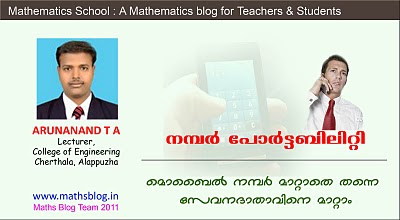Download Edaran
Kepada
Yth. Bapak / Ibu Panitia TUKPD Tingkat Sanggar
Di Jakarta
Dengan hormat, sehubungan dengan pelaksanaan Tes Ujicoba Kompetensi Peserta Didik (TUKPD), dengan ini diinformasikan kembali bahwa:
1. Pelaksanaan TUKPD tahap I tanggal 7 – 10 Februari 2011, dengan jadwal :
Tanggal 7 Februari 2011 pukul 07.30 – 09.30 WIB : Bahasa Indonesia
Tanggal 8 Februari 2011 pukul 07.30 – 09.30 WIB : Matematika
Tanggal 9 Februari 2011 pukul 07.30 – 09.30 WIB : Bahasa Inggris
Tanggal 10 Februari 2011 pukul 07.30 – 09.30 WIB : IPA
(Urutan mata pelajaran disesuaikan dengan jadwal UN 2011)
2. Petugas scan LJK agar mencetak nilai beserta analisis hasil TUKPD untuk dimanfaatkan/ditindaklanjuti di sekolah-sekolah penyelenggara.
3. Pembahasan TUKPD dapat dilihat dan diunduh setiap hari pelaksanaan pada pukul 15.00 WIB melalui: http/matematikasmpdki.blogspot.com/
4. Penyerahan CD oleh panitia tingkat kecamatan yang berisi rekap hasil pengoreksian LJK paling lambat hari Kamis, 17 Februari 2011 ke panitia tingkat provinsi.
5. Bagi sekolah/sanggar yang belum mendaftarkan peserta TUKPD tahap II, paling lambat hari Jum'at, 18 Februari 2011 pukul 10.00 WIB di tingkat sanggar/kecamatan, sedangkan dari panitia wilayah ke panitia tingkat provinsi paling lambat hari Sabtu, 19 Februari 2011 pukul 13.00 WIB.
Demikian pemberitahuan ini kami sampaikan, atas kerjasama dan partisipasinya diucapkan terima kasih.
Panitia Tes Ujicoba Kompetensi Peserta Didik
Download Edaran
Kepada
Yth. Bapak / Ibu Panitia TUKPD Tingkat Sanggar
Di Jakarta
Dengan hormat, sehubungan dengan pelaksanaan Tes Ujicoba Kompetensi Peserta Didik (TUKPD), dengan ini diinformasikan kembali bahwa:
1. Pelaksanaan TUKPD tahap I tanggal 7 – 10 Februari 2011, dengan jadwal :
Tanggal 7 Februari 2011 pukul 07.30 – 09.30 WIB : Bahasa Indonesia
Tanggal 8 Februari 2011 pukul 07.30 – 09.30 WIB : Matematika
Tanggal 9 Februari 2011 pukul 07.30 – 09.30 WIB : Bahasa Inggris
Tanggal 10 Februari 2011 pukul 07.30 – 09.30 WIB : IPA
(Urutan mata pelajaran disesuaikan dengan jadwal UN 2011)
2. Petugas scan LJK agar mencetak nilai beserta analisis hasil TUKPD untuk dimanfaatkan/ditindaklanjuti di sekolah-sekolah penyelenggara.
3. Pembahasan TUKPD dapat dilihat dan diunduh setiap hari pelaksanaan pada pukul 15.00 WIB melalui: http/matematikasmpdki.blogspot.com/
4. Penyerahan CD oleh panitia tingkat kecamatan yang berisi rekap hasil pengoreksian LJK paling lambat hari Kamis, 17 Februari 2011 ke panitia tingkat provinsi.
5. Bagi sekolah/sanggar yang belum mendaftarkan peserta TUKPD tahap II, paling lambat hari Jum'at, 18 Februari 2011 pukul 10.00 WIB di tingkat sanggar/kecamatan, sedangkan dari panitia wilayah ke panitia tingkat provinsi paling lambat hari Sabtu, 19 Februari 2011 pukul 13.00 WIB.
Demikian pemberitahuan ini kami sampaikan, atas kerjasama dan partisipasinya diucapkan terima kasih.
Panitia Tes Ujicoba Kompetensi Peserta Didik
Download Edaran

































